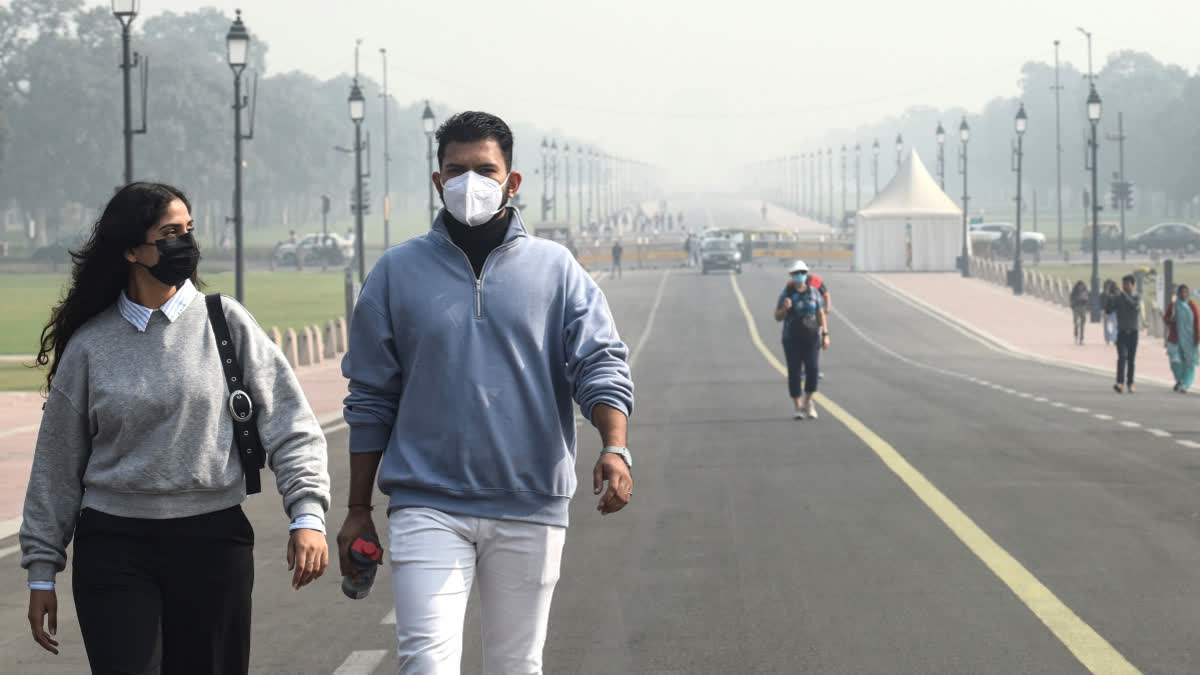New Delhi: Delhi-NCR witnessed a slight improvement in air quality on Wednesday, though pollution levels remained in the ‘poor’ to ‘very poor’ categories.
CPCB's Data: According to the Central Pollution Control Board (CPCB), the city recorded an Air Quality Index (AQI) of 302, down from 392 on Monday.
However, some areas like Mundka and Bawana continued to report significantly high AQIs of 352 and 341, respectively.
In neighbouring regions, Greater Noida and Ghaziabad recorded AQIs of 231 and 216, slightly improving but staying in the ‘poor’ category. These changes reflect temporary relief as weather conditions help disperse pollutants.
What Do Recent Trends Indicate? Mahesh Palawat, vice-president of Skymet Weather Services, explained the recent trends, stating, “Pollution over Delhi has improved since the last two days due to winds from the northwest at speeds of 10-12 kmph, which are dispersing pollutants. We expect light to moderate winds to continue for another two days, keeping pollution levels in the ‘poor’ to ‘inferior’ categories across Delhi-NCR and other North Indian cities.”
However, Palawat warned of worsening air quality as wind patterns shift. “Winds are expected to blow from easterly and southeasterly directions after 24 hours, increasing humidity levels. By November 30, reduced wind speeds could lead to pollutant accumulation, pushing pollution levels back into the ‘very poor’ to ‘severe’ category,” he added.
The absence of rainfall has further aggravated the pollution crisis. Palawat noted, “When temperatures drop, the air becomes heavier, trapping pollutants close to the ground. Dust particles, smoke, and harmful gases mix with water vapour in fog or mist, forming smog. Without strong winds, these pollutants remain suspended near the surface.”
Schools Operate In Hybrid Mode: As pollution persists, schools across Delhi-NCR continue to operate in hybrid mode, offering online and in-person classes. This move aligns with the Commission for Air Quality Management’s (CAQM) directive to reduce children’s exposure to hazardous air.
Little Respite For Delhiites: Meanwhile, Delhi’s weather offered little respite. The city recorded its second-coldest night of the season at 10.4 degrees Celsius, slightly above normal. The India Meteorological Department (IMD) has forecast a further dip in nighttime temperatures to 9 degrees Celsius.
Primary pollutants PM2.5 and PM10 were recorded at 122 µg/m³ and 219 µg/m³, respectively, on Wednesday, down from 143 µg/m³ and 325 µg/m³ on Tuesday. These fine particles pose serious health risks, especially to vulnerable groups.
What Are Experts Saying? Experts have urged citizens to take precautions, including limiting outdoor activities and using masks. With wind patterns and weather conditions set to shift, residents may face more challenging days.
Read More:



